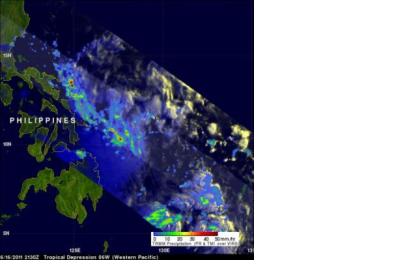New software allows wireless sensor networks to run at much lower energy, according to researchers writing in the International Journal of Sensor Networks. The technology could improve efficiency for hurricane and other natural disaster warning systems.
Wireless sensor networks (WSNs) are used to monitor ecosystems, wild and urban environments. They have been vital in predicting events that threaten species and environments, including gathering information from animal habitats, in volcanic activity monitoring, flash-flood alerts and environmental monitoring.
Wireless sensing in densely populated urban communities can be invaluable not only in monitoring the physical environment, but also for focusing on the impact people and their vehicles have on that environment through mobile emissions monitoring. Such sensing allows consideration to be given to such factors in planning for sustainable development. Unfortunately, the benefits of WSNs come at a price - they require energy.
Computer scientist Patricia Morreale of Kean University in Union, New Jersey and colleagues Feng Qi and Paul Croft of Kean's School of Environmental and Life Sciences, explain how a mesh network of wireless sensors reports data to a central site for environmental monitoring and risk identification. They have developed such a system that reduces the energy requirements compared to conventional WSNs.
The new approach to WSNs is, they say, considered green because of the reduced energy demands in use and by the overall network as well as its actual application.
It is designed so that environmental information can be obtained and communicated through periodic updates rather than the usual "timestamp synchronization" approach of conventional WSNs. "This reduces the amount of communication required between network nodes, resulting in an overall energy saving, while not compromising the nature of the data gathered," the team says.
"The sensor network applications provide an outstanding representation of green networking as sparse but sufficient environmental monitoring, accompanied by real-time data analysis, and historical pattern identification permits risk identification in support of public safety and protection."
The software underpinning the new approach can monitor and check incoming sensor data against an existing database and produce charts predicting the sensors' next most likely reading.
The team explains that by implementing a system that monitors and distinguishes between normal sensor variations and underlying patterns it can be used to generate real-time alarms, the moment a pattern or new event emerged. This is critical in early warnings of potentially catastrophic and fast-moving natural disasters, the team says.
The GWSN - green-WSN - can, at the moment, only predict the next reading based on past values. The team is now working to optimize the software to allow it to estimate future readings for any date and time.

